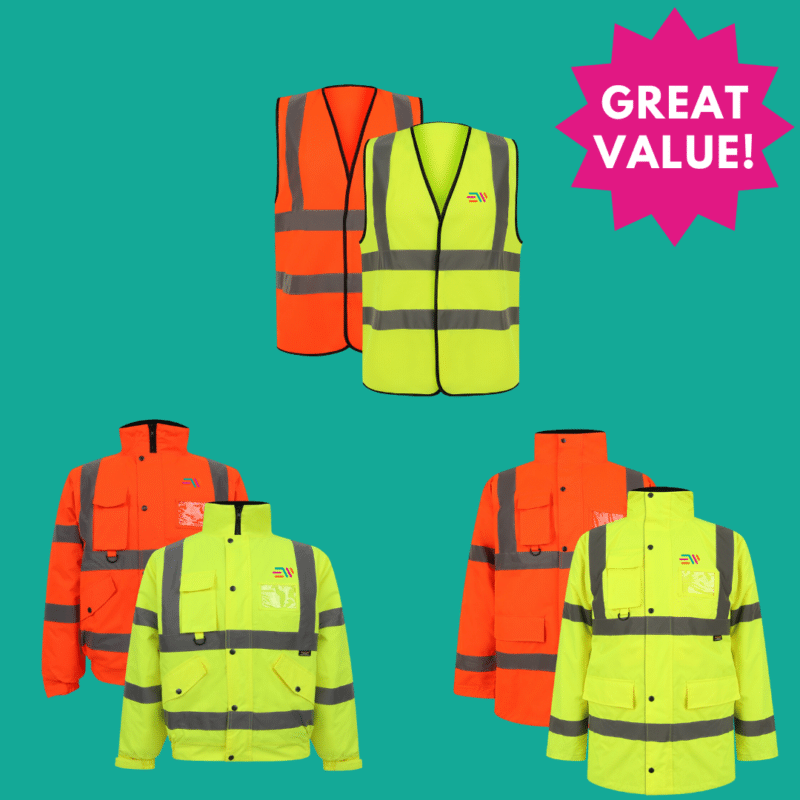When it comes to ensuring the safety of workers in diverse industries, personal protective equipment (PPE) serves as a critical component. However, the question of whether uniforms can be categorised as PPE has sparked debates and caused uncertainty among professionals spanning various industries.
In this comprehensive article, we will explore the topic of uniforms, distinguish them from traditional PPE, analyse the factors that influence their classification and identify the best practices for maximising their effectiveness.
So, read on to delve deeper into the intricacies and acquire a better understanding of whether uniforms can genuinely be considered PPE.
A Guide to Uniforms
Uniforms play a crucial role in various professions as they are garments specifically designed to create a cohesive appearance and enhance the professional image of individuals. They go beyond being mere articles of clothing, serving as a powerful visual representation of an organisation’s brand identity and values. By donning branded uniforms, employees project a sense of unity and solidarity, establishing a strong collective identity within the workplace.
It is worth noting that different industries have unique uniform requirements tailored to their specific needs and objectives. In corporate settings, standardised attire is often the norm, with carefully selected colour schemes and styles that align with the organisation’s branding guidelines. This consistency in appearance cultivates a professional atmosphere and fosters a sense of professionalism among employees.
In contrast, certain industries prioritise specialised uniforms that not only create a professional image but also provide safety and protection. For instance, in high-risk sectors such as construction, manufacturing, and healthcare, uniforms are designed to safeguard workers from potential hazards. These specialised garments may incorporate flame-resistant materials, anti-static properties, or high-visibility elements to ensure the well-being and safety of employees in hazardous environments.
Furthermore, uniforms extend beyond individual workplaces and contribute to a broader sense of identity within professions. For example, medical professionals wearing their white coats or nurses in their scrubs create a visual association with the healthcare field, symbolising their expertise and dedication to patient care. This shared uniform code strengthens professional solidarity and instils confidence in patients, as they can readily identify and trust those who wear these distinct uniforms.
Understanding PPE
A basic understanding of PPE is paramount in ensuring the safety and well-being of workers across various industries. Personal protective equipment, commonly known as PPE, comprises specialised gear and clothing designed to shield individuals from potential workplace hazards. Whether it’s a construction site, a laboratory, or a healthcare facility, PPE acts as a protective barrier between the wearer and dangers such as chemicals, physical impacts, airborne particles, and more.
By comprehending the purpose and significance of PPE, organisations can empower their workforce with the necessary tools to mitigate risks, promote a culture of safety, and safeguard their most valuable asset – their employees.
Requirements for PPE
PPE must meet certain requirements to ensure its ability to provide adequate protection. Firstly, it should be designed to address the specific hazards present in the workplace, considering factors such as impact resistance, chemical resistance, and thermal protection.
PPE should also be comfortable to wear, allowing for ease of movement and reducing the likelihood of user discomfort or fatigue. Proper fit is essential, as ill-fitting PPE can compromise its effectiveness. Additionally, PPE should be durable and withstand the intended use without degradation or failure.
Factors to consider when selecting PPE
Selecting the appropriate PPE requires careful consideration of various factors. Firstly, the nature of the hazard must be thoroughly assessed to determine the type of protection required. Factors such as the level of exposure, duration of exposure, and potential injury severity should be taken into account.
The compatibility of PPE with other required equipment or tasks should also be considered to ensure seamless integration. Additionally, user preferences, such as comfort and ease of use, should be considered to encourage compliance and minimise resistance to wearing PPE.
Compliance standards and regulations for PPE
To maintain workplace safety, compliance with relevant standards and regulations for PPE is essential. Industry guidelines should specify PPE selection, use, maintenance, and training requirements. Compliance with these regulations not only ensures the protection of workers but also helps organisations avoid costly and damaging consequences.
Here at Essential Workwear, we are BSIF Registered which involves annual audits to make sure our PPE are up to standard and that we can provide good guidance as to what PPE items are best recommended for the customer requirement.
Characteristics of PPE
As previously mentioned, the primary purpose of PPE is to minimise the risk of injury or illness by creating a barrier between the wearer and potential dangers. PPE can include items such as safety helmets, gloves, goggles, respirators, and protective clothing. Here are some common characteristics of these items:
- Hazard-specific protection: Different types of PPE are designed to address the unique risks associated with particular industries or job tasks. For example, in construction, PPE may focus on head protection, fall protection, and high-visibility clothing.
- Role-specific: PPE includes safety helmets to shield against head injuries, gloves to protect hands from chemicals or sharp objects, goggles to safeguard the eyes from debris or harmful substances, protective face masks to filter out hazardous airborne particles, and protective clothing to prevent direct contact with dangerous substances or flames.
- Barrier creation: The fundamental purpose of PPE is to establish a barrier between the wearer and potential workplace hazards. By creating a physical barrier, PPE acts as a shield that helps minimise the risk of injuries, illnesses, or other adverse health effects.
- Customisation and fit: Ill-fitting PPE can compromise its ability to provide adequate protection, leading to potential risks. Adjustable straps, multiple sizes, and ergonomic design elements are some of the features that contribute to a comfortable and secure fit, encouraging workers to wear PPE consistently.
- Durability and resistance: PPE should be durable and resistant to the hazards it is intended to protect against. High-quality materials and construction techniques are employed to ensure that PPE maintains its protective properties over time, minimising risk.
By understanding the characteristics of PPE, organisations can make informed decisions when selecting appropriate protective equipment for their workers. While uniforms focus on appearance and cohesion, PPE prioritises physical protection against specific hazards.
Uniforms as PPE
In certain situations, uniforms can indeed be considered a form of PPE. Industries such as healthcare, food services, and manufacturing may utilise uniforms that incorporate protective features, such as flame-resistant materials, anti-static properties, or high-visibility elements. These specialised uniforms serve a dual purpose by promoting a professional image while offering a certain level of protection.
Differentiating Uniforms and PPE
In the context of workplace safety, uniforms and personal protective equipment (PPE) hold distinct roles in protecting workers. It is therefore important to look closer at the nuanced differences between these two essential elements.
Uniforms project professionalism, foster team unity, and establish a cohesive organisational image. Conversely, PPE equips workers to confront and mitigate potential hazards that pose risks to their well-being.
The divergence between uniforms and PPE lies in their fundamental purposes and the varying levels of protection they provide. This distinction defines their unique contributions to maintaining workplace safety.
Factors Influencing Uniforms as PPE
Several factors influence the classification of uniforms as PPE. These include the specific hazards present in the industry, thorough risk assessments, and compliance with regulatory requirements. Identifying the need for PPE within a particular work environment is essential in determining whether uniforms alone are sufficient or if additional protective gear is necessary.
Evaluating Uniforms for PPE Compliance:
When it comes to determining whether uniforms meet the rigorous requirements of personal protective equipment (PPE), a meticulous evaluation process is paramount.
One vital aspect to consider is the material durability of the uniforms. They must possess the resilience and robustness to withstand the demands of the work environment, ensuring that they maintain their protective integrity over time. Whether it’s the unforgiving nature of heavy machinery or the potential exposure to hazardous substances, uniforms must hold up against the rigours of the job.
Another essential consideration is the resistance of the uniforms to chemicals or flames. Depending on the industry and its associated hazards, uniforms may need to provide a barrier against corrosive substances or flames, safeguarding workers from potentially life-threatening situations. Ensuring that the fabric or material of the uniforms possesses the necessary resistance can be the difference between disaster and safety.
Furthermore, the ergonomic design of uniforms deserves careful attention during the evaluation process. It’s essential to assess how well the uniforms fit the workers’ bodies, ensuring ease of movement and comfort throughout the workday. A poorly designed uniform can hinder performance, impede mobility, and even compromise safety. Therefore, ergonomic considerations are paramount to guarantee that the uniforms not only offer protection but also promote efficiency and productivity.
Advantages of Uniforms as PPE
Utilising uniforms as a form of PPE offers several advantages. Enhanced visibility through high-visibility elements or colour coding allows for easier identification of workers, particularly in hazardous environments. Standardisation of uniforms fosters professionalism and can help instil a sense of pride and belonging among employees. Additionally, uniforms can have a positive psychological impact, boosting confidence and creating a cohesive team spirit.
Disadvantages of Uniforms as PPE
While uniforms may offer some level of protection, they have limitations compared to dedicated PPE. Uniforms may not provide comprehensive coverage against all hazards present in the workplace. Additionally, maintaining and cleaning uniforms with integrated protective properties can be challenging, requiring specialised care and potentially higher costs. Employee identity and its potential impact on workplace comfort are also factors to consider.
Best Practices for Uniforms as PPE
To maximise the effectiveness of uniforms as PPE, organisations should follow
best practices. Firstly, proper selection and customisation of uniforms are vital. This includes considering the specific hazards present in the workplace and choosing materials and features that offer appropriate protection. Regular maintenance and inspection of uniforms should be implemented to ensure their continued effectiveness. This may involve routine cleaning, repair or replacement of damaged components and adherence to manufacturer guidelines.
Providing comprehensive training and education to employees is also essential. They should be educated on the purpose and limitations of uniforms as PPE, as well as proper usage, care, and potential signs of wear or damage. Training should emphasise the importance of following safety protocols and utilising additional PPE when necessary.
Organisations should establish a culture of safety by promoting awareness and accountability. This can be achieved through regular safety meetings, ongoing communication regarding PPE requirements, and recognising employees who prioritise safety in their daily work activities. By fostering a safety-conscious environment, organisations can further enhance the effectiveness of uniforms as PPE.
Conclusion
While uniforms serve primarily as a means of establishing a professional image, they can also function as a form of PPE in certain industries. Understanding the distinctions between uniforms and traditional PPE is crucial for organisations aiming to provide a safe working environment.
By carefully evaluating the specific hazards, complying with regulations, and implementing best practices, organisations can maximise the benefits of uniforms as PPE while prioritising employee safety.
Remember, uniforms alone may not always provide comprehensive protection, and additional PPE should be utilised when necessary to ensure the well-being of workers in high-risk environments.



